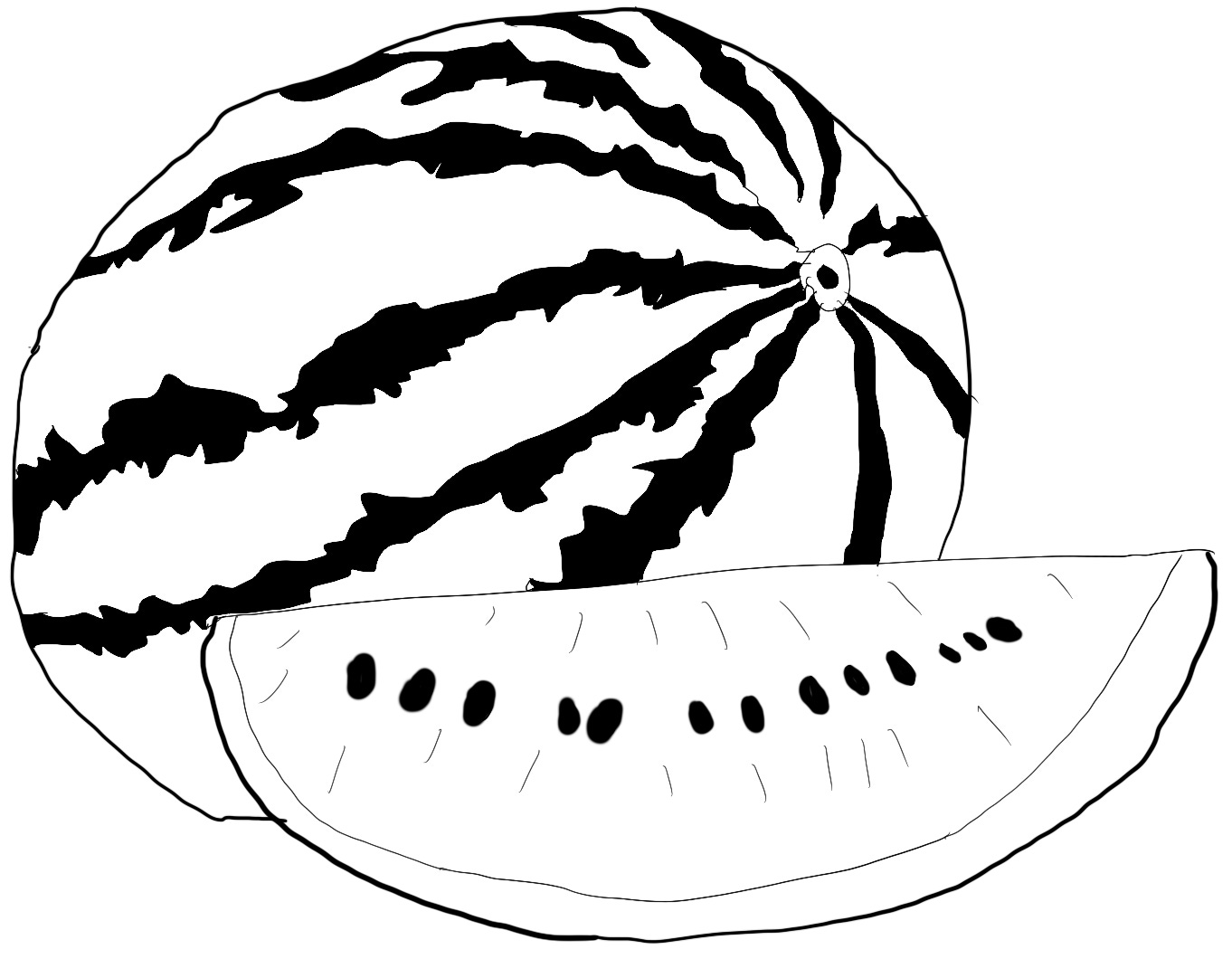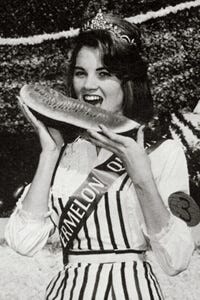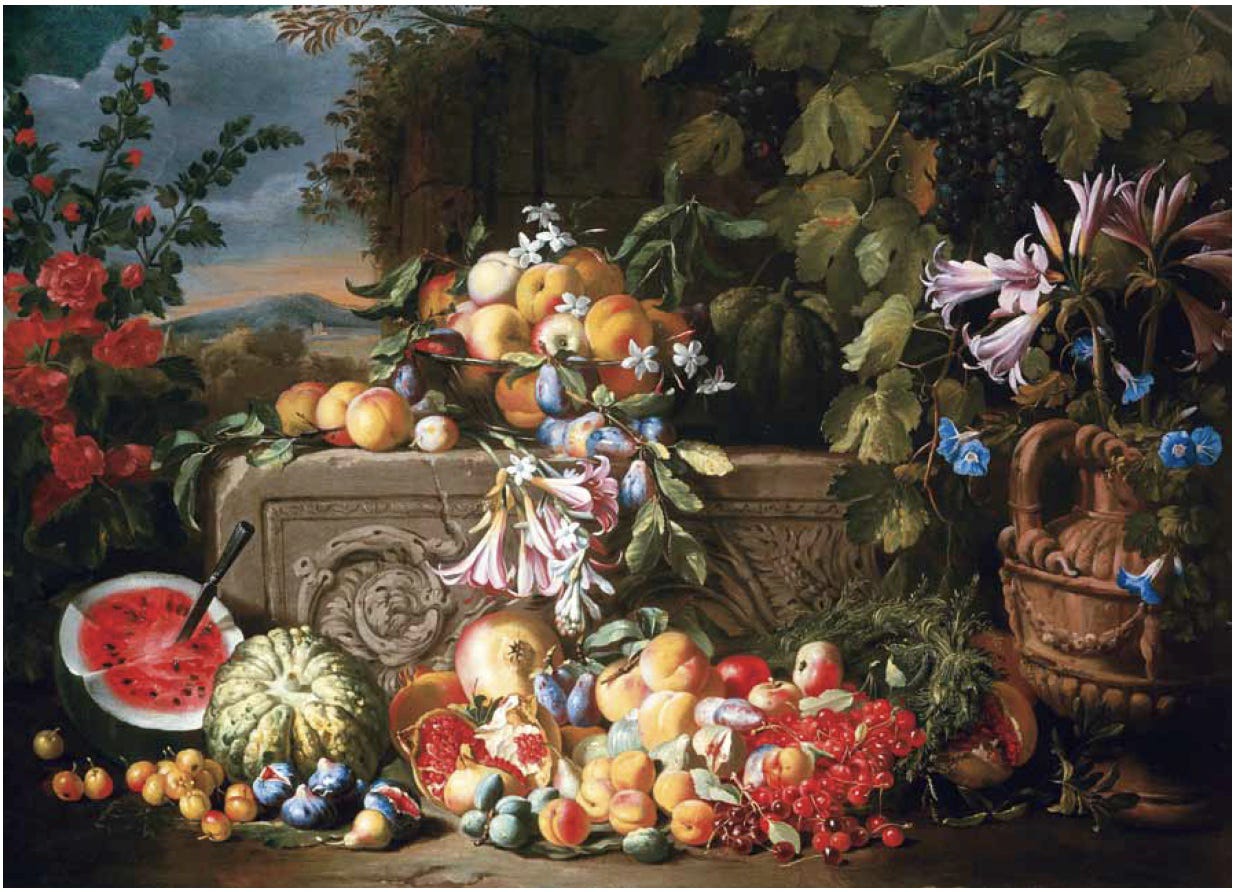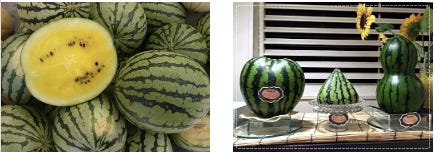To our many new subscribers this week, welcome! We write Considered because it allows us the opportunity to talk to people behind the great objects we love, and to learn about awesome places that have endured. We don’t have ads or monetize in any way. We write purely for the love of it. Feel free to hit reply anytime to share your thoughts or suggestions for future “consideration.” Stay tuned over the next couple of weeks for the triumphant return of Kevin, talking about his favourite topic, Merino Wool.
One of my favourite topics to consider broadly is food. Specifically, fruit and the way it is bred over decades (centuries, even) to refine a type of fruit into a specific version of that fruit that we have come to accept as the only version. In the past we’ve talked about oranges and cherries, exploring how what appears to be a scientific approach to cultivation is really a craft that is refined over time through much experimentation. Oftentimes, the consumer will not even notice when they are eating different varietals. Take strawberries, for example. You likely see 5-6 different varietals at your local grocer over a season, each bred for a specific climate and to be ripe at a specific time, thus allowing strawberry season to extend beyond the couple weeks you would have with only 1 varietal.
Our editor Marissa suggested this week’s topic. Not only is it a nod to everyone’s favourite summer treat, but it touches on one of the natural world’s greatest mysteries: where do seedless watermelons come from? Read on to learn about the official gourd of summer, the watermelon! (Sorry, zucchini). According to the Watermelon Breeding Program at NC State University, worldwide consumption of watermelon fruit and its seeds is greater than that of any other cucurbit, including cucumber, melon, squash, pumpkin and gourd. If you spend 5 seconds thinking about it, it makes sense that watermelons and cucumbers come from the same family, but who knew?!
Design
There are more than 1500 types of watermelon, with the greatest diversity in Africa, followed by China. In many regions they are cultivated for the seeds, as opposed to the flesh, which are pressed to create oil or dried and ground to make a type of flour.
Watermelons grow on vines in a similar fashion to their cousins, pumpkins. There are male and female flowers on the watermelon vine and the “pollination” of the female flowers is required for those flowers to develop seeds. The watermelon then grows around the seeds to protect them. Male watermelon flowers do not turn into fruit. This will come in handy when it comes time to figure out how you make a seedless watermelon.
Normally, pollination is done naturally by bees or wind, but it is also common to “hand pollinate”, which entails using a tiny brush to dust the pollen from the male flower onto the female flower. Farmers will keep enough bees that they have one bee for every 100 watermelon flowers. It is a crazy dance; the male flowers open up first and then, sometime later, the female flowers open for ONLY 1 DAY! The pollinator has an approximately three-hour window to pollinate the female flowers.
What drew me into this topic was learning about the work of a professor, James Nienhuis, at the University of Wisconsin. Nienhuis uses classical paintings to teach about crop breeding. Take a look at the picture below by Giovanni Stanchi from the 17th century:
Then, take a look at the portrait of Carolyn King, the US National Watermelon Queen from 1964.
What are these mystery fruits they are eating?! In Stanchi’s painting the flesh appears to have a type of grain that swirls around in sections, more akin to a pomegranate than the type of watermelon we are familiar with today. The watermelon being eaten by the Watermelon Queen looks much more long and thin compared to the very large and round fruit we lug home from grocery stores these days.
Watermelons made their way up from Africa in the early 1600s. Types of early watermelons had a denser flesh (which is actually the placenta for the watermelon seeds… eww). Breeding of watermelons began almost right away and you can see that some watermelons in the late 1600s looked much more familiar:
So next time you are looking at a still life, consider what impact breeding has had on fruit since. In this example, you can also see the MASSIVE pomegranate in the lower centre of the picture.
Watermelon breeding has the goals of making the watermelon more disease resistant, to give them thicker rinds (to survive transportation to the grocery store) and to have more consistent sizing. Sub 10lb watermelon is a fairly modern invention and they were designed to fit into the average fridge.
Breeding can also be done to customize sugar type. Watermelons are ready for harvest when they have more than 10% of “soluble solids” (otherwise known as a brix of 10). In a watermelon, the soluble solids are generally sugar, so this is a measure of sweetness. For comparison, Considered favourite, the Sumo Orange, has a brix of 20. But would it taste twice as sweet? How sweet something tastes is based on the ratio of fructose sugar (the sweeter sugar) to sucrose sugar. If you want sweeter watermelons, you will look to breed those which have more fructose. The New Yorker had a great article in 2020 on sugar types and creating the perfect artificial sugar if you want to learn more.
Picking a ripe watermelon at the grocery store is a challenge! I have tried the method from The Kitchn with moderate success:
Pick it up: Big or small, the watermelon should feel heavy for its size.
Look for the yellow spot: Watermelons develop a splotch where they rest on the ground. When this splotch is creamy yellow, it’s ripe.
Give it a thump: Tap the underbelly of the watermelon. A ripe one will have a deep hollow sound, which means it is brimming with juice and at the peak of its ripeness. Under-ripe or over-ripe melons will sound dull.
The only concerning breeding I could find was a note in a scholarly article about “mutation breeding” with gamma rays. Gamma Rays were what turned Bruce Banner into The Incredible Hulk. HULK SMASH WATERMELONS. Speaking of smashing watermelons, please enjoy this Gallagher GIF.

Watermelons can be bred to have flesh in a wide variety of colours. Shades of red are most common, but at your local farmers market you might find orange, yellow, or white. So far I have only tried red and yellow. The window when the coloured ones get to market is so small and it is impossible to eat 4 watermelons in such quick succession (despite my best efforts).
What is so cool about this type of breeding is that even with all our gene mapping technology, many of the genes that control these traits are unknown. You just have to stick male and female watermelon flowers together and see what happens! Like life!
Innovation
The most famous watermelon innovation is the seedless watermelon. Work began on seedless watermelon way back in 1939. The first weren’t ready for consumption until 1951. Seedless watermelons have come to dominate the North American market. A couple of months ago I fed some young kids a “Sugar Baby” seeded varietal and they had no idea what the black spots were :(.
Contrary to popular belief, seedless watermelons are not genetically modified. The way a seedless watermelon comes to be is by crossing (aka breeding) two types of watermelons from similar families so that the ensuing product has 4 sets of chromosomes (as opposed to the normal 2). These “tetraploids” are either female, or sterile male. Because the male flowers are sterile, farmers have to grow seeded watermelons (diploids) alongside the tetraploids to get them to fruit. The fruits are not completely seedless and oftentimes you will get those small white empty seed coats.
So as long as you have male watermelon flowers and female watermelons, you can, after a couple of seasons of breeding, make a seedless watermelon.
Sustainability
Breeding programs serve a number of different functions. One important one is testing “cultivars” for disease resistance. The idea is that the more diseases the fruit is resistant to, the less chemicals are needed to grow it.
Watermelon requires less fertilizer and nutrients to grow to size than an average fruit, and it takes the same amount of water to grow a watermelon as it does a strawberry (1-2 inches per week). Where watermelon can become problematic is the working practices associated with its cultivation. The thick rind allows for long distance shipping and over time North American consumers have been consuming less locally grown watermelons and more from jurisdictions with less strict labour protections, like China.
There is likely a local grower or collective of growers that produce watermelons close to you. I had a discussion with Pete Gubbels, a watermelon farmer that is part of a local (to me) collective called the Growers. According to Pete, Ontario, Canada used to have a vibrant tobacco farming industry. With tobacco consumption slowing, farmers were looking for new crops. Watermelon performed well in similar soils and water conditions and the Growers was started. Their “Sweet Harvest” brand watermelons can be found in grocers (and Costco) across Canada.
Cost
In season watermelons can be had for less than $10. Modern consumers often prefer to purchase segments so they can see the ripeness of the fruit, and they have the added benefit of fitting better into smaller fridges.
In Japan, the luxury fruit market has driven some amazing watermelon innovation. Grown in glass molds, they first grew square watermelons and have since expanded to hearts, triangles and even faces. These watermelons tend to start at $100 and go up from there.
PS:
IMO, there is nothing like a good fruit queen. In the case of watermelon, it is Paige Huntington of Tyler, Texas. She spends the year traveling to cities all over the nation, and often into Canada, talking to people in supermarkets, and at fairs and festivals, telling everyone about the nutritional benefits, and economical values of watermelon. It also appears she wears her tiara at all times.
Paige started as the 2019 Texas Watermelon Queen and was elevated to National Queen in 2020.










Try it grilled! 🍉😍
Enjoyed this, though placentas are hardly “eww”! They’re actually pretty fascinating: https://www.theatlantic.com/health/archive/2013/12/the-amazing-placenta/282280/